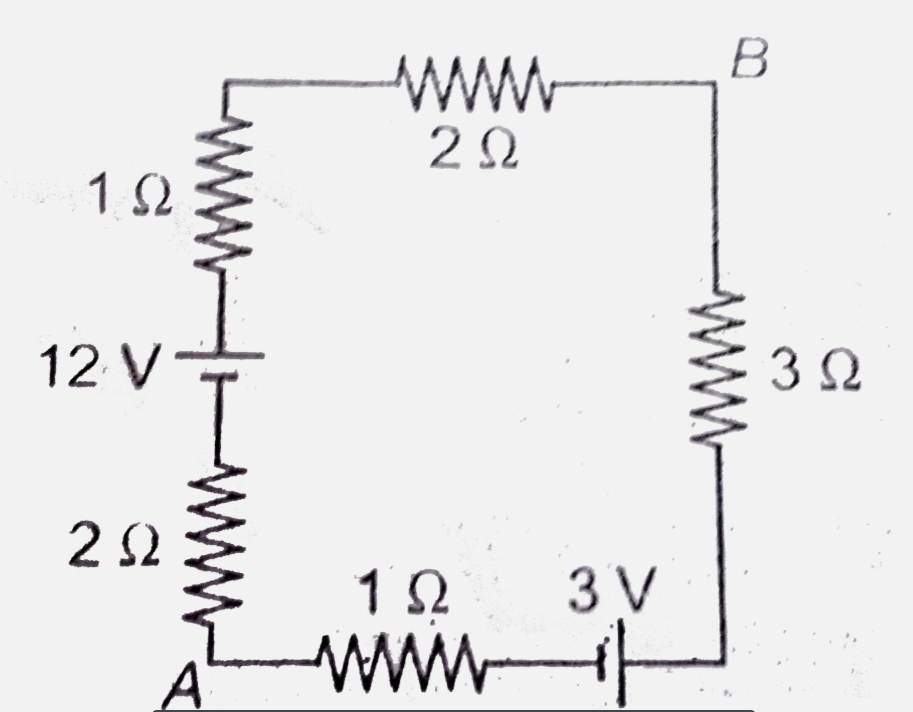Assume that an electric field →E=30x2ˆi exists in space. Then the potential differences VA−V0 where V0 is the potential at the origin and VA, the potential at x=2m is
−80J
80J
120J
−120J
The correct Answer is:A
Step by step video, text & image solution for Assume that an electric field vec(E) = 30 x^(2) hat(i) exists in space. Then the potential differences V_(A) - V_(0) where V_(0) is the potential at the origin and V_(A), the potential at x = 2m is by Physics experts to help you in doubts & scoring excellent marks in Class 12 exams.
Updated on:21/07/2023Topper's Solved these Questions
- ELECTROSTATICS - I BOOK - MOTIONCHAPTER - ELECTROSTATICS - I EXERCISE - EXERCISE - 4 (Level -II) PREVIOUS YEAR - JEE ADVANCED
13 Videos
- ELECTROSTATICS - I BOOK - MOTIONCHAPTER - ELECTROSTATICS - I EXERCISE - EXERCISE - 3 (Level -II) (Section F)
2 Videos
- ELECTROSTATICSBOOK - MOTIONCHAPTER - ELECTROSTATICSEXERCISE - Exercise -3 Section (B) Previous Year Problems | JEE Main
30 Videos
- ELECTROSTATICS-IIBOOK - MOTIONCHAPTER - ELECTROSTATICS-IIEXERCISE - Exercise - 4 (Level - II)
30 Videos
Similar Questions
Assume that an electric field →E=30x2ˆj exists in space. Then the potential difference VA−VO, where VO is the potential at the origin and VA the potential at x=2m is:
View SolutionAn electric field →E=Bxˆi exists in space, where B=20V/m2. Taking the potential at (2m, 4m) to be zero, find the potential at the origin.
View Solution
Knowledge Check
Assume that an electric field →E=30x2ˆi exists in space. Then the potentail differences VA−V0 where V0 is the potential at the origin and VA, the potebntail at x=2m is
A−80VB80VC120VD−120VAssume that an electric field →E=30x2ˆj exists in space. Then the potential difference VA−VO, where VO is the potential at the origin and VA the potential at x=2m is:
A(a) 120J/CB(b) −120J/CC(c) −80J/CD(d) 80J/C
Potential difference VB−VA in the network shown is

View SolutionAn electric field →E=ˆiCx exists in the space, where C = 10 V/m2 . Taking the potential at (10 m, 20 m ) to be zero, find the potential at the origin.
View SolutionAn electric field →E=→IAx exists in the space, where A=10Vm−2. Take the potential at (10m, 20m ) to be zero. Find the potential at the origin.
View SolutionAn electric field →E=(10ˆi+20ˆj)N/C exists in the space. If the potential at the origin is taken to be zero, find the potential at (3m, 3m).
View SolutionAn electric field →E=−−−−−−−→i20+→j30NC−1 exists in the space. If the potential at the origin is taken to be zero find the potential at (2m, 2m).
View SolutionAn electric field is described as →E=ˆix+ˆkz.
The potential difference VAB (in volt) between A(0,0,0) and B(2,2,0) is :
View Solution
